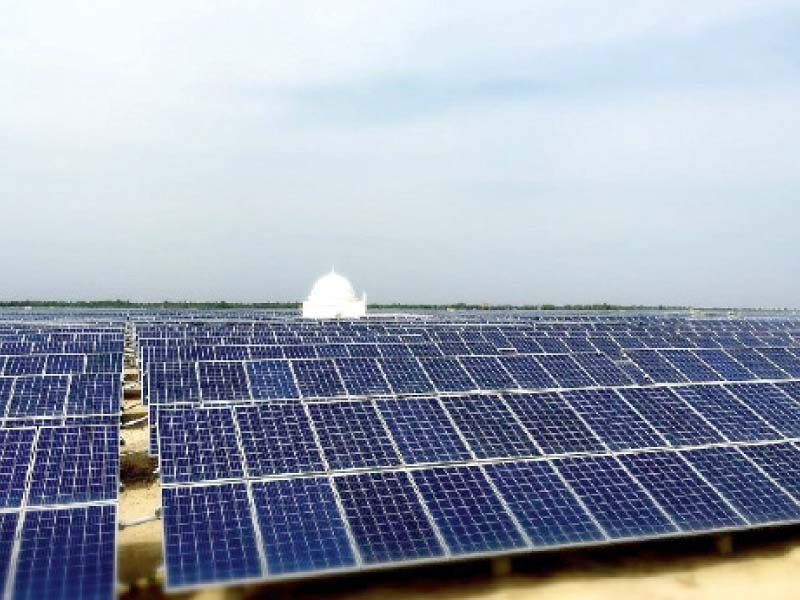
The government has ambitious programmes for installing solar PV capacities. Fossil-based electricity is expensive, has availability issues and requires foreign exchange, which we don’t have.
Current load-shedding is also due to the lack of foreign exchange to buy fuel than the generation or transmission capacity. So, the idea of expanding solar appears to be reasonable.
Recently, tenders were floated for a 600-megawatt solar PV plant at Muzaffargarh. Unfortunately, not a single bidder responded. Why did this happen and how can we prevent this from happening again, is our subject in the following. A general feeling is that it was due to political instability and fears of default. Now that the IMF has transferred its first tranche, things have improved.
While not much can be done about these macro issues, we will examine the technical issues which can improve the attractiveness and reduce risks and uncertainty issues.
On the technical side, following criticism has been made by the stakeholders – fixing a low benchmark of 4 US cents per unit, large project size of 600MW, and exchange rate and interest rate variations and the indexation requirements thereof.
Project size is a double-edged sword. It may be attractive due to the prospects of lower overheads and higher earnings by the bidders. However, the larger project size, which enhances capital requirements, increases financial and implementation risks.
Many, otherwise eligible, smaller parties decline to participate. In this case, large or small, none has responded, though.
It may be worthwhile to examine the feasibility of small-sized projects implemented in stages, eg, 100MW projects. Once investor confidence is built, one can enhance the capacity.
There are two approaches for bidding – capex bidding under a cost-plus regime, and tariff bidding, fixed or variable. In this case, tariff bidding was required under a partial indexation regime, which caused maximum confusion. These are 20 to 25-year investments during which period a lot may change, especially in smaller economies and jurisdictions. The US and other countries and their large companies may be able to handle and assess the risks involved and the consequent costs thereof.
In this project, they have rightly allowed for indexing currency variations in the tariff formula. But have ignored interest rate variations.
For a long time, international interest rates under Libor (now SOFR) had remained low and constant over a long time after 2008. Interest rates vary cyclically in the longer run.
Libor/ SOFR have increased from 0.5% to 5.5%. It may come down in the medium term. It is difficult to project interest rates and is risky to make assumptions.
The indexation would save sides – the buyer and the seller. One pays for interest rate as it is at the prevailing time. It would be advisable that in the next bidding round, interest rate indexation is allowed.
Local interest rates are high and may remain high for a few years at least. It may be desirable to maximise foreign currency component of the project.
The question is, if there is so much variability to take into account, why not have bidding for capex? And keep other variables indexed, as is available under the cost-plus framework.
There was allegedly low benchmark tariff of 4 US cents. It is a controversial issue. What is the realistic tariff keeping in view all the fixed and variable factors?
The low benchmark tariff gives a signal to the bidder that it is a tight market or it discourages the bidder also, as has happened. Having no benchmark tariff attracts a large number of low and high bidders.
It may, therefore, be advisable that the project drops the idea of benchmark tariff altogether. The acceptance or rejection can be done with or without the benchmark.
What is the going rate of solar tariff in various markets? We have data from a very recent (2023) project in India (Punjab). A 100MW project has been awarded at a tariff of 3.2 US cents per kWh. Its capex is $66.3 million. The project will generate 227 MU. Earlier, many projects in India have been awarded at a tariff of 3 US cents.
In Pakistan, the tariff granted several years ago was 4 US cents. In the meantime, interest rates have increased.
However, capex has come down on solar panels and other ancillary equipment. Commercial sources have indicated a potential tariff figure of 6 cents, which may be on the higher side.
They are possibly assuming a constant and high interest rate at 5.5%. As mentioned earlier, the indexation may bring down the life-cycle tariff.
We are short of foreign exchange in our economic formula for weighing the value of foreign exchange vis-a-vis local currency.
In earlier times, various yardsticks were available to measure it and build it in project appraisals. Shadow pricing and the classical cost-benefit analysis is unknown these days. We may have to rediscover them again.
And our various agencies like IGCEP, Nepra and Ogra may have to be facilitated and trained in these valuable tools.
Many people ask, if this is the right time for buying. They also are scared of the upcoming load of capacity cost, which has been causing circular debt.
However, they tend to underestimate the impact of high fuel cost. Latest LNG bids received are at $22 per mmBtu. This is in summer. What will happen in winters when demand is high everywhere.
Fortunately, coal prices have come down. IGCEP people can optimise and guide the government on the right combination. But let us get solar prices input from the next round of bidding. Can it be done at the time of elections?
The writer is former member energy of the Planning Commission and author of several books on the energy sector
Published in The Express Tribune, July 31st, 2023.
Like Business on Facebook, follow @TribuneBiz on Twitter to stay informed and join in the conversation.



1732266251-0/Josh-Brolin-(1)1732266251-0-165x106.webp)
1732266343-0/BeFunky-collage-(82)1732266343-0-165x106.webp)













COMMENTS
Comments are moderated and generally will be posted if they are on-topic and not abusive.
For more information, please see our Comments FAQ